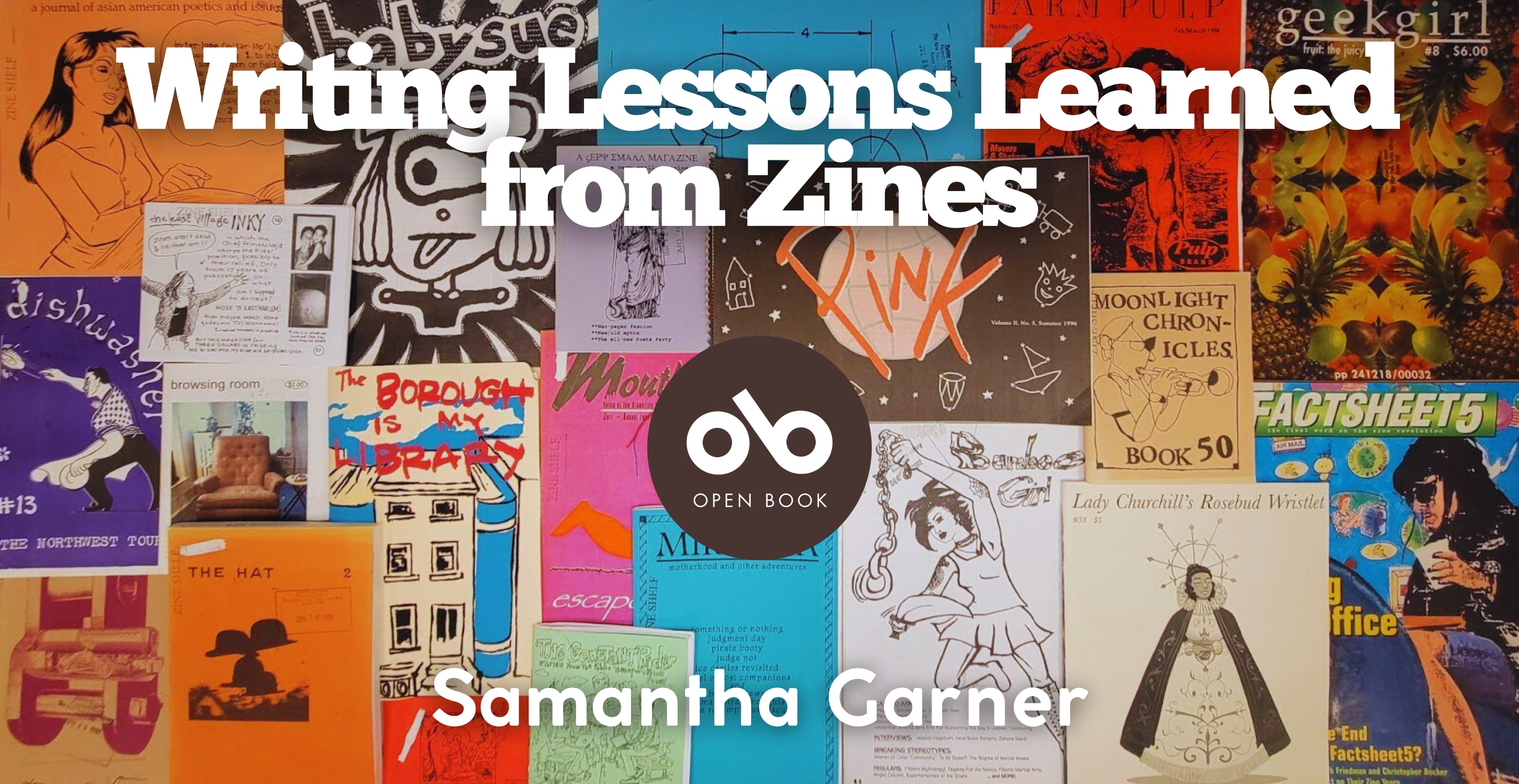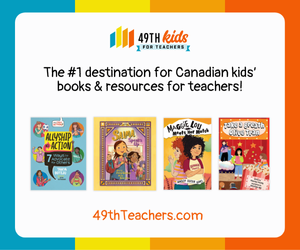Writing Lessons Learned From Zines
By Samantha Garner
In my early twenties, my friend Teri Vlassopoulos introduced me to zines and it changed my life.
If you’re not familiar with the term, ZineWiki defines a zine as “an independently- or self-published booklet, often created by a single person … created by physically cutting and gluing text and images together onto a master flat for photocopying [or] by typing and formatting pages on a computer.” Zines have an interesting history rooted in Black literary magazines of the Harlem Renaissance, sci-fi fandom, and the punk subculture. However, today they’re incredibly varied.
Teri was a seasoned zinester, so when I expressed interest in making one myself she showed me how to cut, paste, create flats, photocopy those flats, and assemble a completed zine. With minimal effort and cost I could create fifty or so little booklets of my writing, photos, illustrations, and linoleum prints (Teri taught me the latter too). And even better—people wanted to read them! Overall I made five issues of my zine Telectric, and another one called Pinpoints and Unfamiliar Settings in collaboration with Teri. In my own zines I wrote about being mixed race, about moving across the country, about visiting BC, and general thoughts about life.
I don’t make zines anymore but I’ve been thinking about them a lot lately. Whether or not you’ve ever made a zine yourself, I wanted to share some of the writing lessons I learned from zines that still help me in my writing life.
Creative experimentation is fun
The thing that lit up my brain about zines most of all was that there were really no rules. I could write about anything. I could make my zine look any way I wanted. The only limit was my imagination. That did come back to bite me with my very first issue of Telectric in which every page was wider than the one before, the front cover had two separate lino prints on it, and I bound the cardstock cover by poking holes along the spine with a thumbtack and threading thin wire through said holes. While I don’t recommend that level of effort, I can’t say I regret it. I investigated a creative idea. There was literally no downside.
While my longform writing now is more structured than zine writing was, creative experimentation is still key to my process—whether it’s something big like melding genres or small like trying out an unconventional sentence structure. Exploring a wide variety of ideas in my writing is highly rewarding.
You don’t have to be perfect
Along with the “no rules” ethos of zines was the appreciation and acceptance of a DIY, unpolished result. Don’t get me wrong—it’s important to refine your writing, to learn and grow in it. But it’s also important to release yourself from the pressure of getting it right the first time. After all, we very rarely do!
Zines showed me the joy in the rough edges. While of course I don’t want to publish a novel full of plot holes or awkward syntax, being able to enjoy the process of raw creativity is an important writing lesson I learned from zines. And here’s a fun side effect: releasing my grip on perfectionism has led to some of the most creative and interesting writing I’ve ever done.
Your CanLit News
Subscribe to Open Book’s newsletter to get local book events, literary content, writing tips, and more in your inbox
Community is essential
As with other art forms, zines connect people through ideas and possibilities. One of my favourite things about zines was the way they were shared. One dollar or a pre-arranged trade was the usual rate for one of mine. For that I got to connect with strangers around the world. I participated in a zine-focused messageboard where we talked about life just as often as we talked about zines. I even ran my own zine distro for a while, which helped me share great writing with others.
As a writer, I draw upon my various communities often for support, commiseration, and feedback. They help keep me going and give me invaluable inspiration when I need it. Zines taught me that community doesn’t have to be large or full of people exactly like me. Every bit of connection counts when it’s needed.
Diversity of voices is important
I’m not exaggerating when I say that zines shaped my political and interpersonal opinions more than most things. I read zines by vegan anarcho-punks, I read zines by twee university students, I read abstract poetry—I read everything. Whether or not I agreed with the things they wrote or related to them at all, just having access to their thoughts shaped the person I still am today.
And aside from that, it was just interesting to read the things different people had to say. It helped me to expand my worldview and indulge my annoyingly curious nature—both things that every writer can benefit from.
Stay true to your voice
With my zines I wrote what I want. With my non-zine writing I can’t always do that, but I do hold on to the kernel of that mindset. There are ideas and questions I’ll always want to pursue, and things I’m just not interested in writing even if it might guarantee publication. Zines showed me that my voice is my own and there will always be people who like it. It may not be every person, but it will never be no person. This can be a really hard thing for writers to internalize but I promise you it’s true.
You don’t have to make a zine yourself to benefit from these writing lessons I learned from them, but if you ever get the chance I hope you take it! It’s a lot of fun and it might teach you some different lessons you can use in your own writing life.
The views expressed by Open Book columnists are those held by the authors and do not necessarily reflect the views of Open Book.
Samantha Garner is the author of The Quiet is Loud, shortlisted for the 2022 Kobo Emerging Writer Prize. A Canadian of mixed Filipino-Finnish background, her character-driven fantasy novels explore themes of identity and belonging. When not writing, Samantha can be found daydreaming in a video game or boring a loved one with the latest historical fact she’s learned.
She can be found online at samanthagarner.ca and on Instagram and Twitter at @samanthakgarner.



